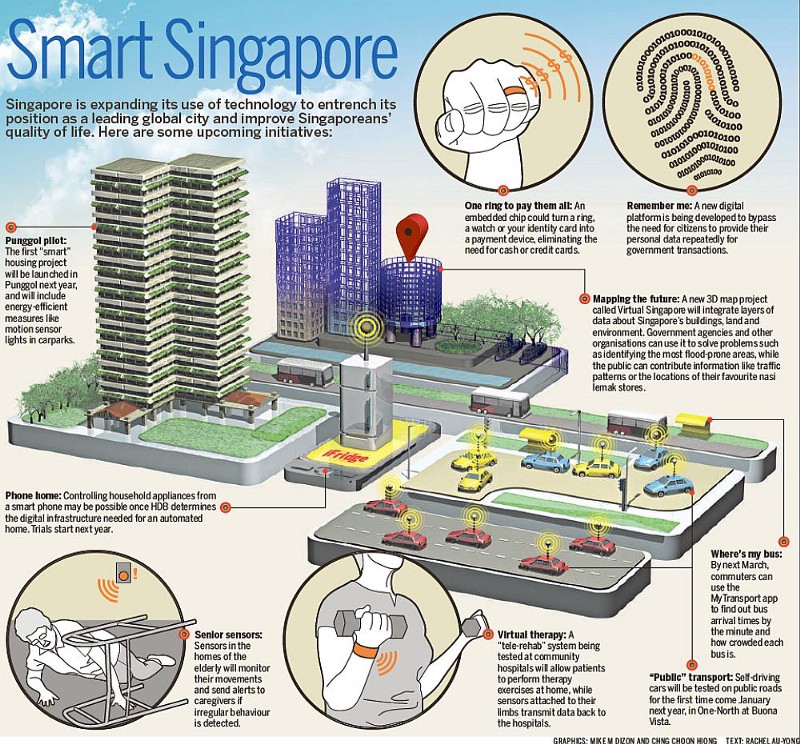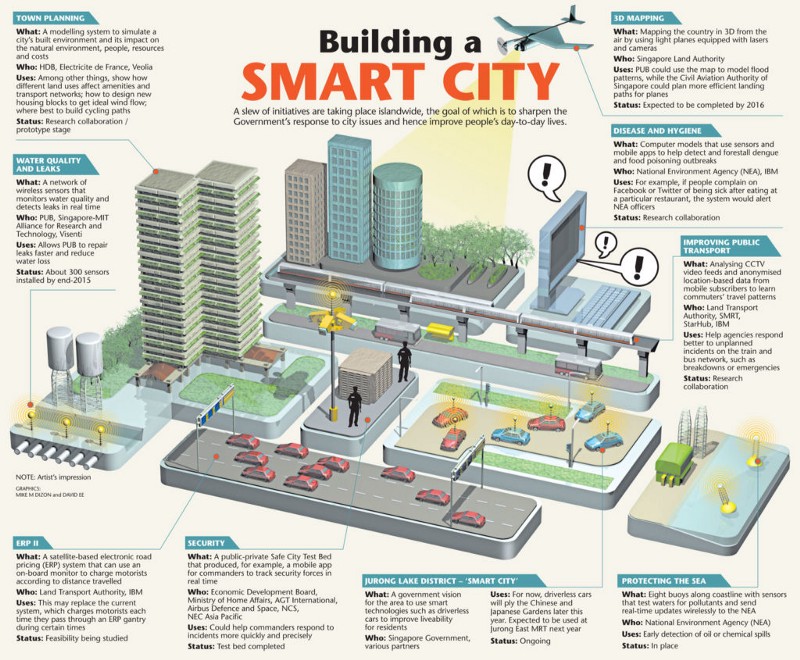Prime Minister Lee Hsien Loong spent a large segment of his National Day Rally speech elaborating on Smart Nation, which he described as “using IT comprehensively to
create new jobs
new business opportunities
make our economy more productive
make our lives more convenient and
make this an outstanding city in which to live, work and play

But with the recent MRT breakdowns, complaints about extra costs inhibiting uptake of cashless payments, and debates about the loss of educational values and face-to-face interactions, the Smart Nation discussion has become one of Snark Nation.
(Would you rather we revert to typewriters and liquid paper? Or buying SBS yearly booklets to check out bus routes and timings?)
Smart Nation is not just about the final destination, not just about the journey, but also why we are even doing this.
It’s not really a new thing we’re embarking on here. We’ve been always trying to upgrade our processes and tech as a nation, just under different names and initiatives in the past.

Many other countries are also creating solutions with better tech and infrastructure, in the hope of making their citizens’ lives less lecheh.
What examples of Smart Nation initiatives do other countries have?
Steven Lek, former GM Japan of Singapore Airlines, who currently blogs at retiredowhat.wordpress.com, shared two examples below.
In New York city, LinkNYC is a futuristic comms network in the form of a mini-monolithic stand (like payphones from the future) that is replacing progressively all of New York’s 7,500 payphones.
In addition, each Link will provide a superfast, free public Wi-Fi, phone calls, device charging and a tablet for access to the city services, maps and directions.
https://www.youtube.com/embed/yJWtm3nVrYs
That’s using technology to reduce information asymmetry.
Steven also says:
I have lived and worked in Japan over two periods (Osaka in 1983–1985, Tokyo 1996–1999) and the one thing I trust and respect is the Shinkansen, the Japanese Bullet Train.
This high-speed rail service opened just days before the 1964 Olympic Games in Tokyo (the first ever held in Asia).
Over its 50-plus year history, carrying over 10 billion passengers, there have been no passenger fatalities due to derailments or collisions, despite frequent earthquakes and typhoons in a mountainous country.
The Shinkansen employs an ATC (Automatic Train Control) system, eliminating the need for trackside signals.
It uses a comprehensive system of Automatic Train Protection.
Centralized traffic control manages all train operations, and all tasks relating to train movement, track, station and schedule are networked and computerized.
I can’t help (as a trained engineer in my early career and moving on to country management) and feel amazed (rather shocked in fact) that our MRT system can undergo so much non-stop saga about protracted delays caused by (purportedly) signalling failures.
https://www.youtube.com/embed/OdXkSXRfJJk
It’s not about you-do-I-must-also-do, chasing technology just because we kiasu, but the intent behind Smart Nation should be about solving today’s and hopefully tomorrow’s problems proactively.
But it’s easier said than done
A reactive nation will ask “why bother?” and “must do ah?”, but a proactive nation will say “why not?” and “what can we do better?”.
Steven opines,
Technology and resources will help us build that Smart Nation house. This is the easy part.
The challenge is how to turn that house into a Smart Nation home where each Singaporean will join hand and believes in his heart that we can benefit as one family.
The key now is to sustain our human spirit as we march forward to build our Smart Nation.
Implementation plans should include calls to rekindle the same can-do spirit which in our pioneering days has helped us come out of the marshes.
It is a matter of the heart and resilience is needed more than ever.
For every step forward, are we leaving more people behind?
Some of the louder narratives after the National Day Rally speech was about the problems of technology, losing the human touch, etc.
These complaints show we are scared, of losing our current way of life, fear of being redundant and excluded from modern society.
Steven, more than any millennial, understands the challenge of staying relevant.
Yes, there is always a risk in venturing into any new venture.
Building a Smart Nation is the way to forge ahead.
Standing still will result in a slow strangle.
As is evident in many large cities, the demand for transportation and other services has become stretched and the built environment suffers severe deterioration.
The quality of life deteriorates and its accompanying stresses and hardships stretch our social graces even more.
Singapore, with its well qualified civil service and community organisations, has no shortage of young talent in strategy formulation.
The challenge is in strategy implementation.
Since the retirement of the pioneer generation, the consequential loss of experience is palpable, an experience in implementing plans with a heart i.e. with the skills required for nation building and persuasion, and not by sheer authority.
A possible solution?
I am sure that amongst that pool of veterans are some who can be persuaded to do “national service” again.
Do we have a map to find where they are?
Then, we can combine the strategies of the youth with the “mindfulness” and experience of the veterans.
There will be people who feel left behind, but Smart Nation isn’t just for the tech savvy. It should be about making every Singaporean’s life a better one, because united we stand, divided we fall.